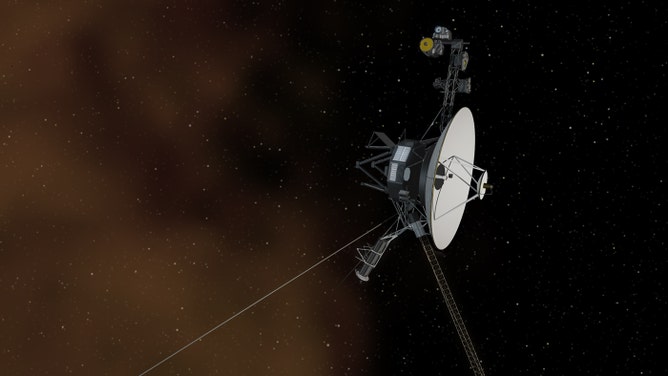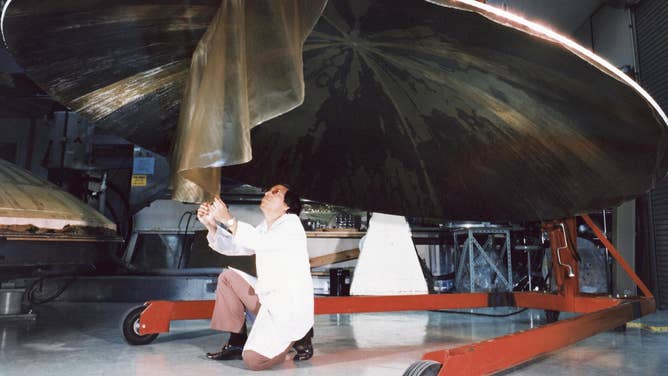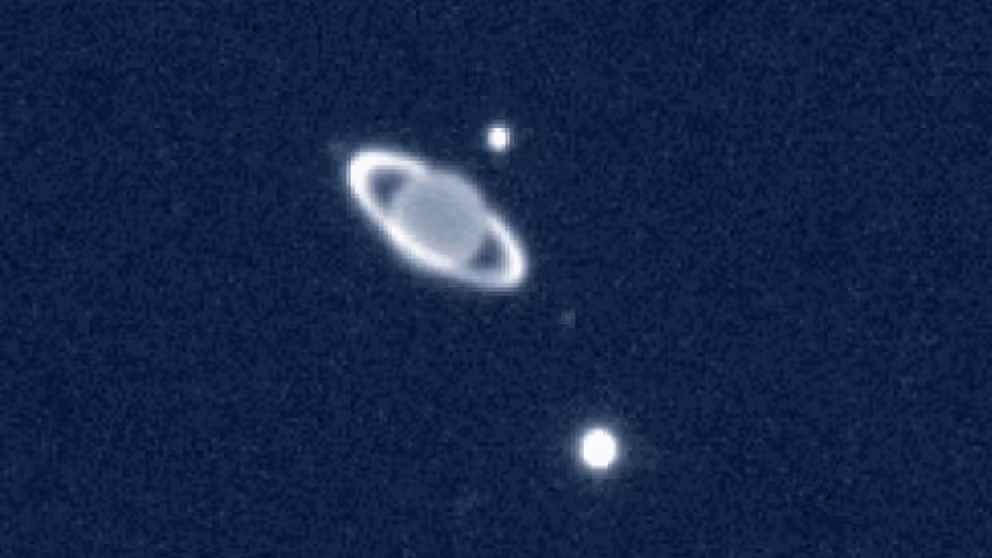NASA engineers have renewed hope to fix hobbled Voyager 1 after interstellar space data outage
The process of troubleshooting an issue with Voyager 1 traveling through interstellar space is complicated. It takes about 45 hours for commands to be sent and a response to come back, but NASA engineers recently got a new clue to solving the spacecraft computer issue.
Discovering Uranus
FILE VIDEO: Uranus was discovered 241 years ago.
NASA engineers are acting as detectives to resolve a communication issue with the Voyager 1 spacecraft, one of the space agency's 46-year-old twin spacecraft zooming through interstellar space.
Voyager 1 and 2 launched in 1977 a few weeks apart, taking advantage of a 176-year planetary alignment to take a grand tour of all four giant outer planets – Neptune, Uranus, Saturn and Jupiter. The spacecraft missions have continued decades after those final planet flybys, eventually entering interstellar space.
Voyager 1 is more than 15.1 billion miles from Earth, and in mid-November, the spacecraft began sending back nonsense computer code instead of science data.
VOYAGER 1 AND 2 CONTINUE OFFERING NEW MYSTERIES FROM INTERSTELLAR SPACE
"It looked like it was just sending back what was the equivalent of just a single tone, you could think about, like a dial tone," Voyager Program scientist Linda Spilker said. "It had gone from sending back useful information, all those ones and zeros turning into data, to now just sort of being stuck sort of in a repetitive loop of ones and zeros and no longer basically communicating with us."
NASA engineers have honed in on one of three computers on the spacecraft, known as the Flight Data System (FDS), as the cause behind the communication problem. The FDS is returning unusable data from the telemetry modulation unit (TMU).
"Its role is to basically collect all of the data from the science instruments and the spacecraft, package them all neatly up and send them back to the Earth," Spilker said of the FDS.

Artist rendering of the Voyager 1 spacecraft
(NASA)
These two systems work in tandem to get science and engineering data back to Earth from 15 billion miles away.
Troubleshooting an issue with a spacecraft traveling through interstellar space is complicated. It takes about 22.5 hours for a message from Earth to reach the spacecraft and another 22.5 hours for a response back to Earth. The Voyagers were also constructed before the digital age.
Spilker said this combination makes the problem-solving effort multifaceted. Circuit diagrams for the FDS computer are posted in a room at JPL covered with sticky notes as engineers search through paper notes and contact retired Voyager engineers.
NASA REESTABLISHES CONTACT WITH VOYAGER 2 LOCATED MORE THAN 12 BILLION MILES FROM EARTH
About once a week, Spilker said a team of engineers "sit down and think about what we can try next." After carefully creating and checking the plan, a command or a "poke" is sent to Voyager in hopes of fixing the corrupted section of the computer. Then, they wait two days to find out if it worked.
"The waiting in between is hard. That's for sure," Spilker said.

Archival image showing an engineer on the Voyager team working on the construction of the dish-shaped Voyager antenna. July 9, 1976.
(NASA/JPL-Caltech, NASA/JPL-Caltech Photojournal / NASA)
On Wednesday, NASA shared hopeful news that the Voyager team saw different activity on one section of the FDS but still not in the correct format. However, an engineer with NASA's Deep Space Network – a network of radio antennas to communicate with Voyagers and other spacecraft – was able to decode the signal and discovered a readout of the entire FDS memory.
This could be the breadcrumb Voyager's engineering team needs to get the spacecraft to speak the correct language again.
"The FDS memory includes its code, or instructions for what to do, as well as variables, or values used in the code that can change based on commands or the spacecraft’s status. It also contains science or engineering data for downlink," NASA's Jet Propulsion Laboratory wrote in a blog post. "The team will compare this readout to the one that came down before the issue arose and look for discrepancies in the code and the variables to potentially find the source of the ongoing issue."
This isn’t the first scare for either spacecraft. Another issue with garbled data for Voyager 1 in 2022 was fixed over several months. In 1981, the team experienced a similar communication issue to the current problem.

This illustration shows the positions of NASA’s Voyager 1 and Voyager 2 probes outside the heliosphere, the region surrounding our star, beyond which interstellar space begins. (Credit: NASA/JPL-Caltech)
(NASA)
Last year, an incorrect command sent Voyager 2 pointing away from Earth, unable to send back data. Teams were able to send a patch and reorient the spacecraft.
Spilker and the rest of the Voyager team are used to bumps on this long road. However, it's worth it because the twin interstellar explorers are still collecting valuable data.
Voyager 1 crossed the heliopause 11 years ago, and what it continues to send back is reshaping what scientists know about the interstellar medium. Eventually, future spacecraft missions traveling even farther from the Sun's influence will benefit from lessons learned from the Voyager missions.
"It's just really an amazing story to think that two spacecraft are still operating after 46 years and having basically flown through the outer solar system … the entire heliosphere, across the heliopause, now on out into interstellar space," Spilker said.
With the latest clue in this case, Voyager engineers are devising their next plan of action to help the spacecraft start sending back data from 15 billion miles from Earth.
